QLED technology is moving from "green" to mature
Looking back on the history of the TV industry, from the battle between rear projection, plasma and LCD, and now the battle between QLED and OLED, every change in display technology means a shuffle in the industry. QLED, as a "junior" who entered the industry two years later than OLED, has even been surpassing OLED, driven by TV giants such as Samsung, TCL, Hisense, and Philips.
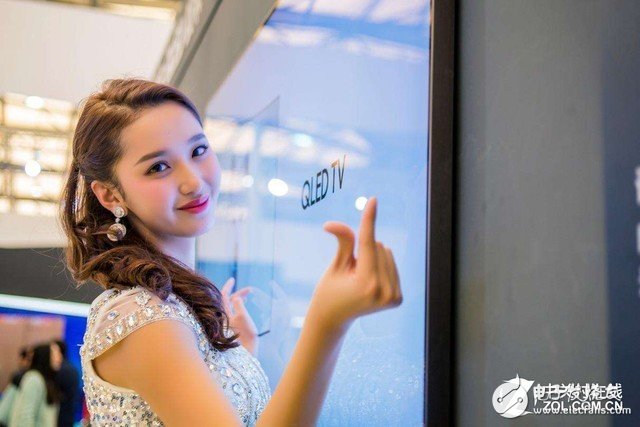
You may not believe it! QLED display technology is the future master
In 2015, Samsung released SUHD TV, announcing the horn of QLED TV. In 2016, it acquired QD Vision, a technology company known as the "father of quantum dot display", to further improve the development of QLED. In 2017, Samsung ’s first QLED The flagship TV-Q8C was born. Since then, Samsung has officially embarked on the road of QLED.
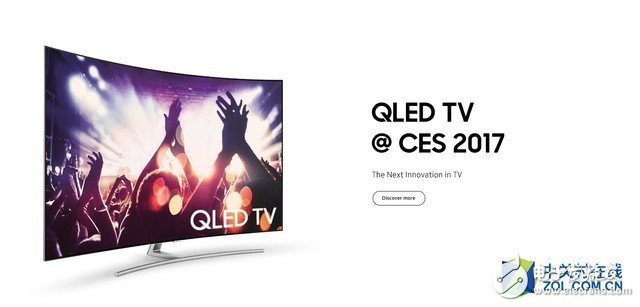
CES 2017 Samsung QLED TV officially unveiled
In addition to Samsung, the domestic giant TCL has also begun to study and promote quantum dot display technology in the world, so it has absolute say in this advanced display technology. Since the launch of the first product with quantum dot technology in 2014, it has been deeply cultivated here; from the world ’s first QUHD TV quantum dot TV X1 in early 2016 to the X5 just announced this year, TCL ’s QLED layout has also become more rapid .
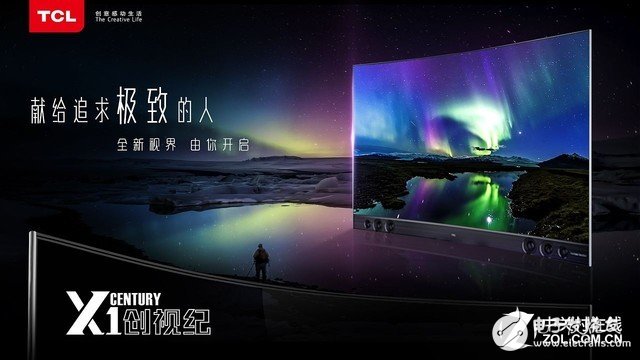
TCL X1 quantum dot TV
At present, TCL's investment in quantum dot technology has reached several billion yuan. Currently, it is using the existing OLED materials to practice printing technology, so as to gradually realize the application of quantum dot technology, and plans to strive for commercialization of quantum dot technology in five years .
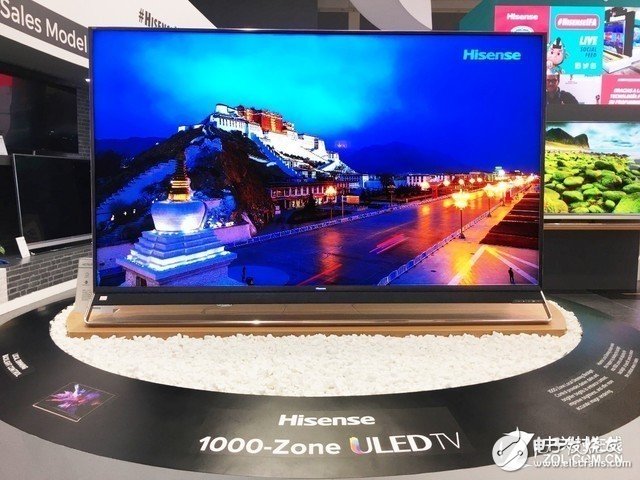
Hisense ULED TV
Hisense took a different approach, playing with its own R & D and implementing its own ULED TV. Hisense Tianji series ULED ultra-quality TVs combine the advantages of quantum dot technology and become a representative product of LCD TVs. It is also another milestone product for Hisense to promote the upgrade of LCD technology. It is reported that Hisense's new generation of quantum dot display products will be officially launched in 2019, and will continue to launch better ULED TV products afterwards.

Quantum dot technology is going from mature to mature
In recent years, QLED technology has gradually matured from its initial "greenness", and its market share has steadily increased. The world's largest Samsung and the third largest TCL are all supporting QLED display technology, it is foreseeable that the future momentum will become stronger. So, why can quantum dot QLED backlight technology make so many giants fall for it?
Electroluminescence is the ultimate form of QLED TV
What is QLED technology?
QLED is the abbreviation of "Quantum Dot light EmitTIng Diode" in English, which is literally translated as quantum dot light-emitting diode in Chinese, and we usually call it quantum screen display technology. This is a new technology between liquid crystal and OLED. The blue LED light source illuminates the quantum dots to excite red and green light.
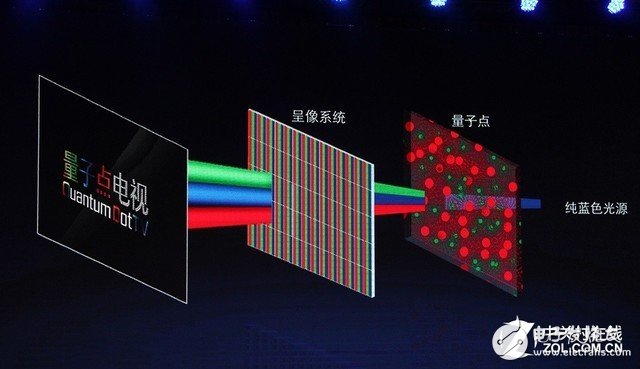
Quantum dot TV display principle
The core of QLED technology is "Quantum Dot (quantum dot)", which is a kind of solution semiconductor nanocrystals, and its size ranges from 2 nanometers to 8 nanometers. When it is stimulated by light or electricity, quantum dots will emit colored light; the color of light is determined by the size and shape of quantum dots. Depending on the diameter, quantum dots can emit different colors of light from blue, green, yellow, orange, to red.
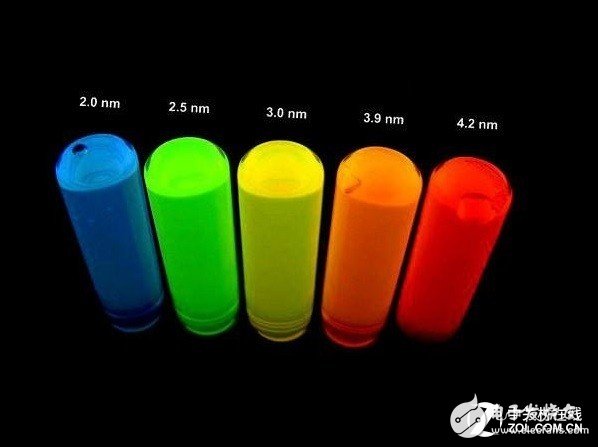
Different diameters, different colors of light emitted by the excited quantum dots
QLED technology makes full use of the characteristics of quantum dots, and places quantum dot optical materials between the backlight and the liquid crystal panel to form a layer of quantum dot film. The purpose of this is to solve the problem that the backlight of ordinary LCD TVs is not bright enough. The blue LED is used to obtain high-purity white light through the optical material (QDEF diaphragm) with red and green quantum dots, and at the same time restore more beautiful colors. In addition, the addition of quantum dot film can also eliminate the polarizer on the light source side of the traditional LCD TV, effectively reducing the manufacturing cost of liquid crystal display products.
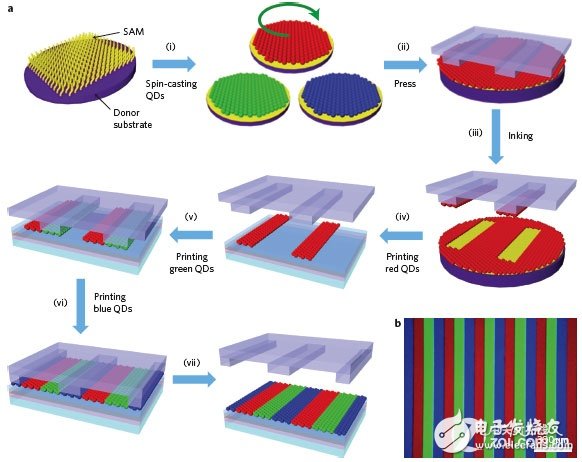
The working principle of quantum dot QLED
In fact, QLED TVs on the market at this stage are all variants of the above-mentioned applications, and all belong to the upgrade plan of quantum dot technology in the field of LCD. The essence is still "photoluminescence", and the properties of quantum dot material "self-luminescence" are not used to the best, so it still hasn't got rid of the problem of the LCD TV being bound by the back beam. To be precise, the current application of quantum dot technology may be called QD-LCD more accurately.
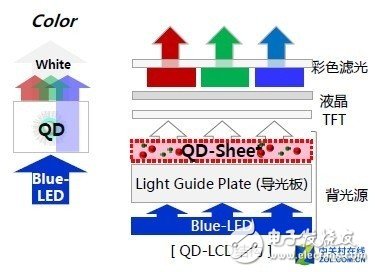
QD-LCD display technology principle
Although it cannot be completely "self-luminous", the current QLED display technology still has many unique advantages. Due to the addition of quantum dot materials, it can greatly improve the color conversion efficiency of the backlight system of traditional LCD TVs, make the colors of the screen brighter, and have the characteristics of energy saving and environmental protection. Its picture brightness and color purity are about twice that of WLED backlight system. Considering that the physical characteristics of the liquid crystal technology are inherently insufficient, the quantum dot QLED display technology has brought a new life to the traditional LCD TV, and it is only a matter of time to completely replace the LCD.
Electroluminescence is the ultimate form of QLED TV
When it comes to the final solution of QLED technology, of course, it is the same as OLED, to achieve "no backlight" "electroluminescence." Currently, Samsung is doing its best to develop the next generation of QLED technology. The future QLED TV will no longer use traditional blue light to produce white light through the quantum dot film to illuminate the LCD screen; instead, it will be electrically driven to make the quantum dot itself emit light and produce images through color mixing. Modules such as liquid crystal and film are needed, and the backlight unit is completely eliminated.
Eventually, the electroluminescent QLED will have similar principles to the OLED display method, and the panel structure is basically the same, but the luminescent material is different, and the rest are completely consistent from the cathode level to the package.
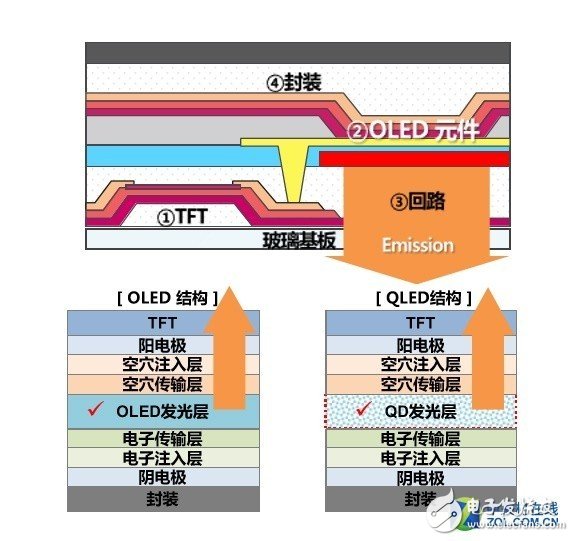
Eventually QLED and OLED will have almost the same structure
Therefore, it is not difficult to find from the technical characteristics of quantum dot QLED. The industry believes that quantum dot QLED display technology has sufficient basis to change the TV market pattern. Quantum dot QLED display technology can bring lower cost and longer life to TV. , Higher brightness, better color and lower power consumption.
Write at the end:
At present, QLED is still in the stage of technological research and development. There must be some difficult problems that cannot be overcome by itself. It is expected that there will be consumer products in four to five years. However, as consumers increasingly return to the essence of television and pursue picture quality, it may not be so important who is the next generation of display technology. People may be concerned about who is cheaper and who has a better display effect.
The two major technological battles with different advantages have left us with a lot of imagination about the future display form. LG Display and BOE are working hard to lay out and further expand OLED panel production capacity; Step up research and development of electroluminescent QLED display technology. Mainstream TV manufacturers stand at the crossroads of panel technology, whether it is OLED to the left or QLED to the right. We can see that different companies have made different choices, even for manufacturers who have not yet stood, this choice is imperative. , Just like the plasma and liquid crystals of the year.
As for the outcome of this matchup, it is still full of unknowns.
1.ANTENK FEMALE HEADER Series Receptacle Strips are a series of sockets offered in a multitude of sizes and profiles designed to satisfy most .100" pitch socket requirements. Available in Single, Dual and Triple row, they are offered in Straight, Right Angle, SMT, Bottom Entry and Pass Through PCB mounting styles. Each type has a specially designed contact system which uses a wiping mating action and produces a high normal force connection with gold, tin or selective gold plating. All are available with Standard or Hi-Temp Thermoplastic insulators. Our SMT offering is available with optional pick and place pads and tape & reel packaging.
2.Our products are widely used in electronic equipments,such as monitors ,electronic instruments,computer motherboards,program-controlled switchboards,LED,digital cameras,MP4 players,a variety of removable storage disks,cordless telephones,walkie-talkies,mobile phones,digital home appliances and electronic toys,high-speed train,aviation,communication station,Military and so on
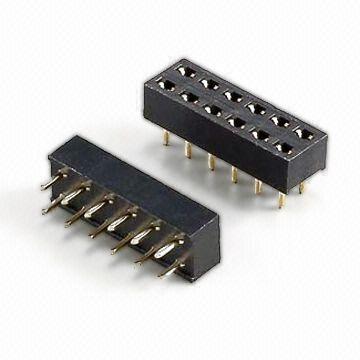
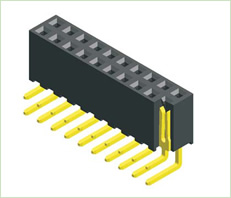
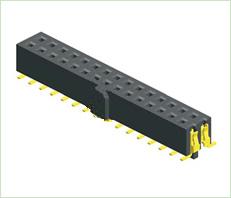
2.54 Famale pin headers
SPECIFICATION
Current Rating: 3.0 Amp
Insulation Resistance: 1000M ohms min
Contact Resistance: 20M ohms max
Dielectric Withstanding: AC500V
Operating Temperature: -65°C to +125°C
Contact Material: Brass
Insulator Material: PBT,UL 94V-0 Black
Female Pin Headers,Pcb Female Connectors,Pin Connector Header,Oem Female Header
ShenZhen Antenk Electronics Co,Ltd , https://www.antenkcon.com